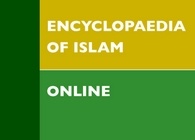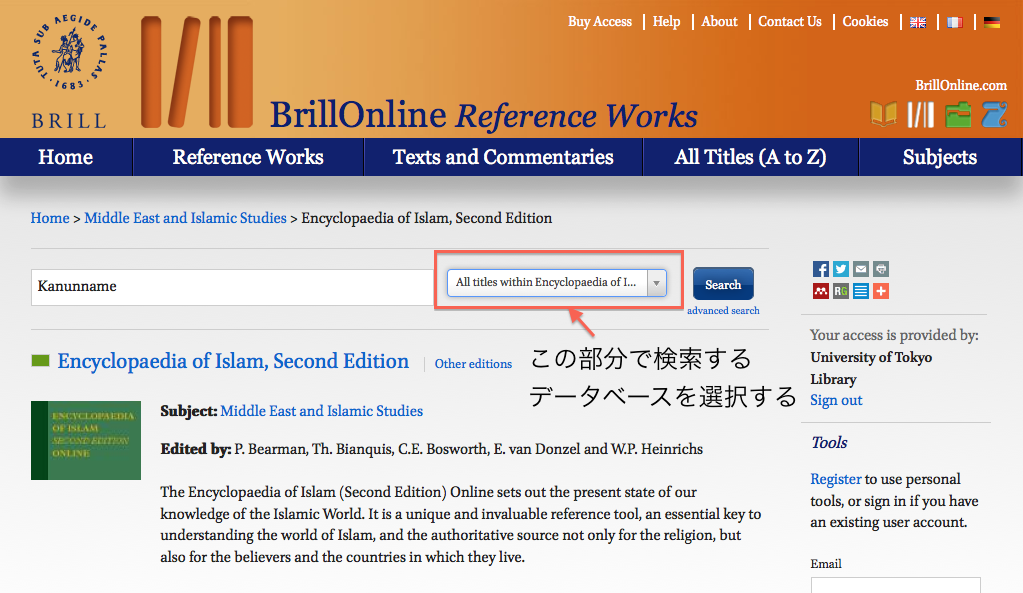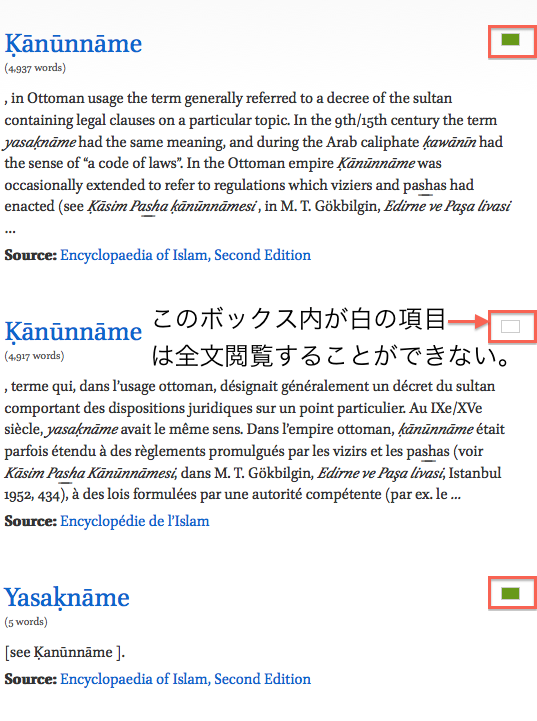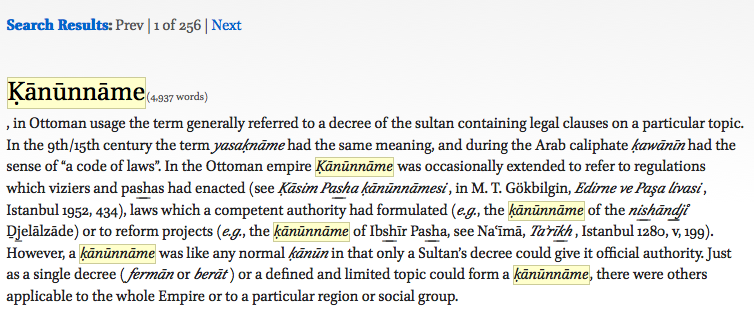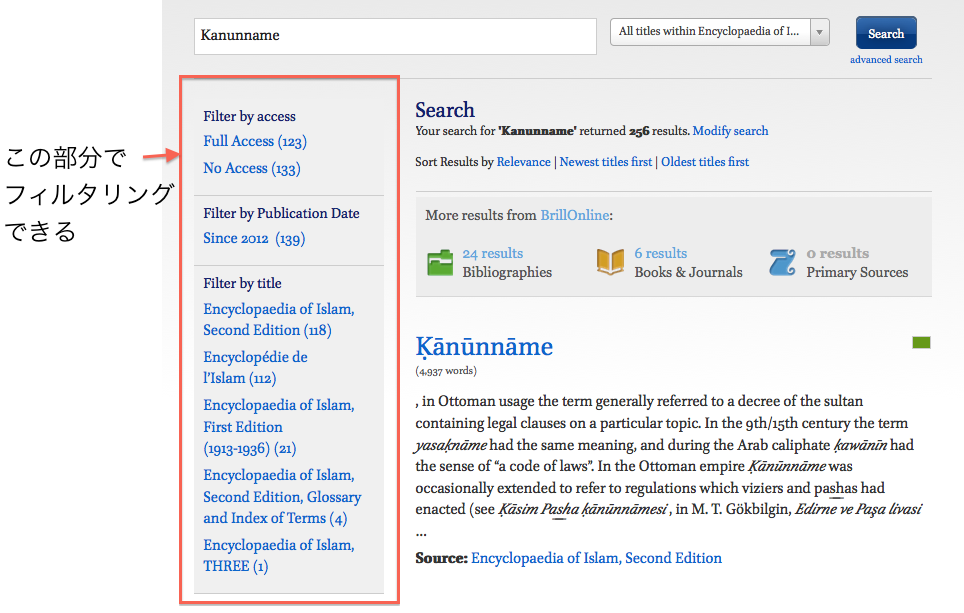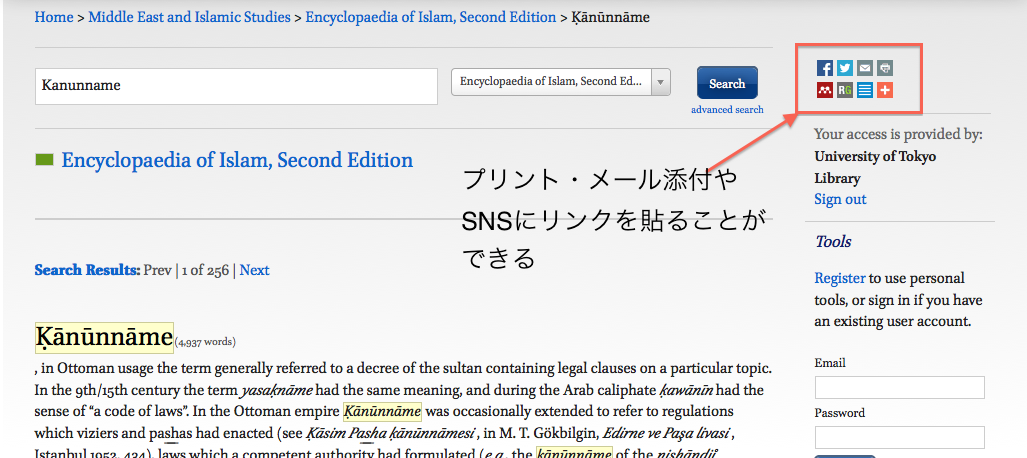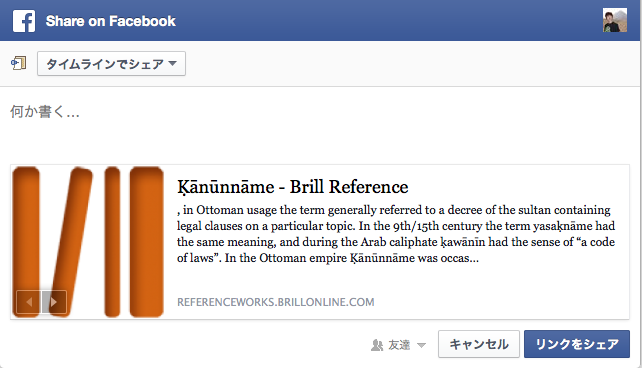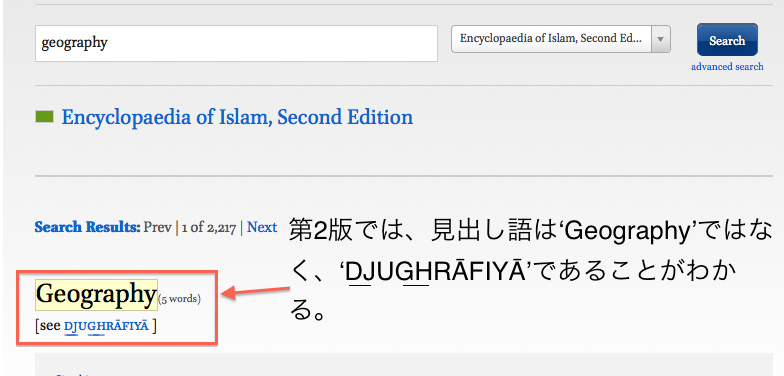About the Encyclopaedia of Islam Online
U-PARL has recently acquired the rights to use Encyclopaedia of Islam Online (2nd and 3rd edition).
Although it goes without saying that the Encyclopaedia of Islam is an indispensable reference work for conducting research on Islam, the topics this work covers deal not only with Islam as a religion, but a wide range of topics including the government, history, geography, literature, science, and culture of the places where Islam has had an impact. U-PARL has acquired the rights to use the Encyclopaedia of Islam 2nd edition, published between 1960 and 2005, as well as its index and glossary, and the on-line database of the 3rd edition, published from 2007 onward.
Although the Forewords to the 2nd and 3rd editions give explanations of the special features of each of those publications, here we will explain how to use the online database.
1.Accessing the Database
◉ On-campus Access
If you are on a computer connected to the on-campus network, please click here.
◉ Off-campus Access
To access the database offline, current students must use the “SSL-VPN Gateway Service”(SSL-VPN Gatewayサービス) while Professors, Assistant Professor and other members of the faculty must use the “Authentication Gateway Service” (認証GWサービス) Please click here for details.
2.Using the Database
When accessing the database, you should first come to the screen below. This screen is the homepage of the online database for the 2nd edition.
Because the 2nd edition itself, the glossary and index to the 2nd edition, and the 3rd edition database are three separate databases, please do the following procedure to search all the databases at once.
- First, enter your search term into the search bar.
- Second, in the menu to the right side of the search bar (outlined below in red) select “All titles within Encyclopaedia of Islam,” and then click the “Search” button.
The results should be displayed as shown in the diagram below.
Diagram 1
Search page for the Encyclopaedia of Islam 2nd edition: You can select the database you want to search by using the drop-down menu to the right of the search bar.
There should be a small rectangular box on the right side of the screen in the same line as the headword, (outlined in red in the diagram below). A green box indicates that an entry that can be viewed, while a white box indicates that the entry cannot be viewed.
Search Results Page: If the box to the right side of the headword is green , it indicates that the full entry for that headword can be viewed.
One of the advantages of this online database is that it not only searches through the headwords, but also in the body text of entries containing your search term.
Some search terms may return a great number of hits, and in such an case, the filtering options on the left side of the screen may be useful.
Entries with search hits: Notice the search term is highlighted in yellow.
One of the advantages of this online database is that it not only searches through the headwords, but also in the body text of entries containing your search term.
Some search terms may return a great number of hits, and in such a case, the filtering options on the left side of the screen may be useful.
Filtering: Search results can be fine-tuned with the search filtering options displayed on the left side of the screen.
Also, with the icons displayed in in the top right corner of the search results, search results can be printed out, mailed as an attachment, or posted as a link on social networking services in just one click.
Diagram 5
Printing, e-mail, and SNS Icons: Easily share your results with one click.
For example, if you click the Facebook icon, the window below should open, and by clicking the “Share Link” button, the page should be posted to Facebook. When you click on the link in the post, the search results should be shown (in this example, it jumps to the entry for “Ḳānūnnāme”). With some ingenuity, you may even be able to use social networking services in your research.
Clicking on the Facebook icon: The current page will be posted to Facebook.
3.Things to keep in mind when searching
Finally, for more efficient searching, it is a good idea to keep the following two points in mind.
◉ How headwords are given
First of all, the editorial guidelines used for headwords differs between the 2nd and 3rd edition of the Encyclopaedia of Islam. In the second edition, the majority of headwords are given in Arabic, however, in the 3rd edition, the policy was changed so that for many general-use terms, headwords are given in English. For example in the 2nd edition, the entry concerning slavery is given under the headword Abd (meaning “slave” in Arabic), while the 3rd edition has the relevant information under the headword “Slavery.”
Diagram 7
Searching for the term ‘Geography’: In the 2nd edition, most headwords are given in Arabic.
In this regard, searching in a traditional paper dictionary would require some forethought, but, as described above, with the online database, because the body of the entry can be searched as well, so that even if you searched for ‘Slavery’ in the 2nd edition, the entry for “Abd” would come up as a hit, because the body of the entry contains the word “slavery.” However, in order to better use the dictionary, it is important to understand this difference.
◉ Unique Transcription Method
The transcription method for Arabic used by the Encyclopaedia of Islam is unique in part, that the jeem character (ج) is transcribed as dj while the qaf character (ق) is transcribed as ḳ. In the paper edition, without knowing this rule, it may be difficult to find some entries. However, with the online database, even if this idiosyncrasy is ignored, the system will display similar results for you to a certain extent. For example if you want to search for the word قانون نامه, you should use the spelling ‘ḳanunname’ or ‘kanunname,’ however, with the spelling ‘Qanunname,’ the message ‘Did you mean: kanunname’ will be displayed, and the results of the corrected search term will be displayed.

Diagram 8
Searching for ‘Qanunname’: The system displays the proper search term automatically.
This concludes the explanation of how to use the Encyclopaedia of Islam Online. Probably the easiest way to understand the system is to try and use it yourself. Whenever you come across a term or name of a person that you don’t know in your research, see if you can find it in the Encyclopaedia of Islam Online!


